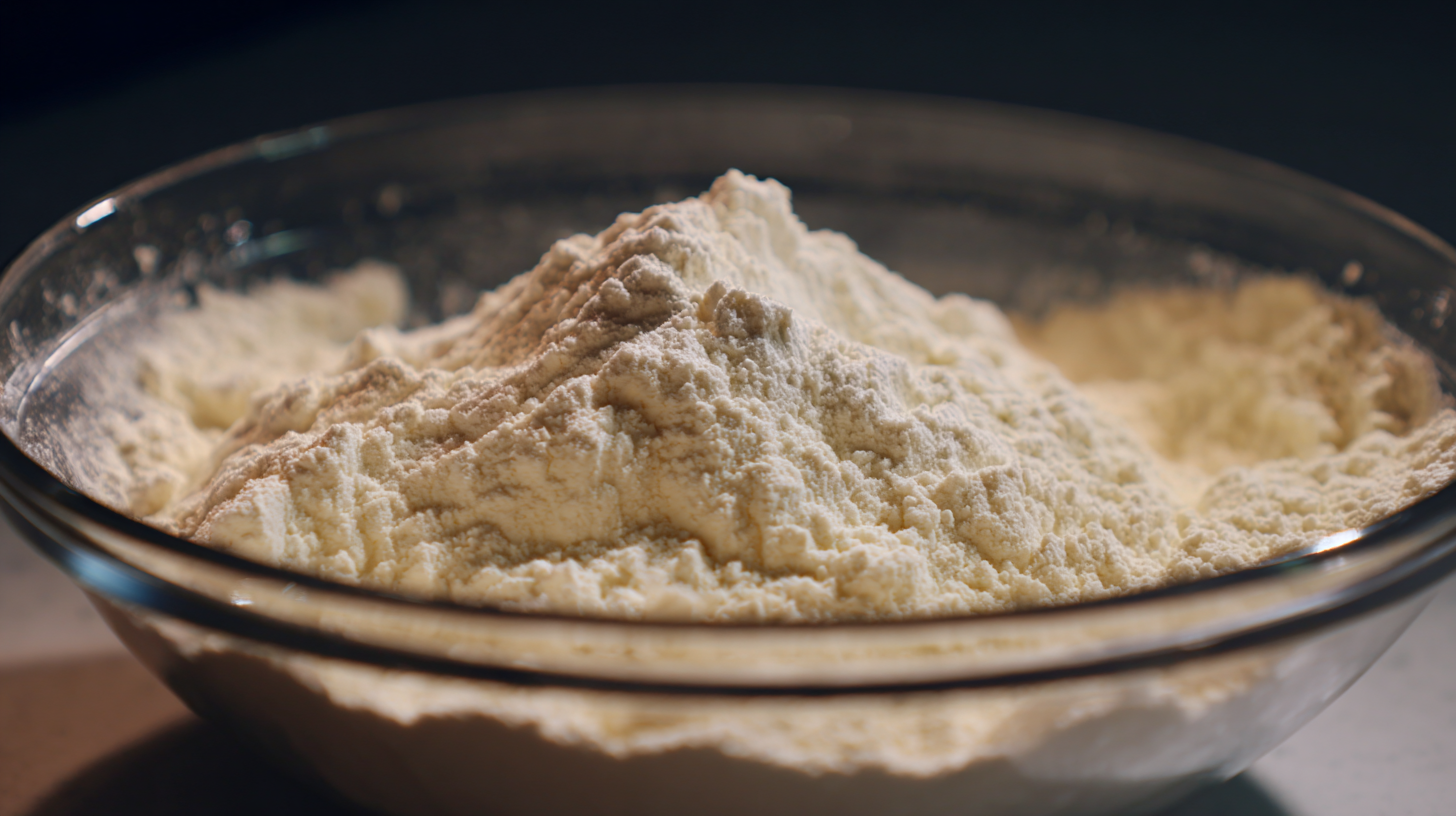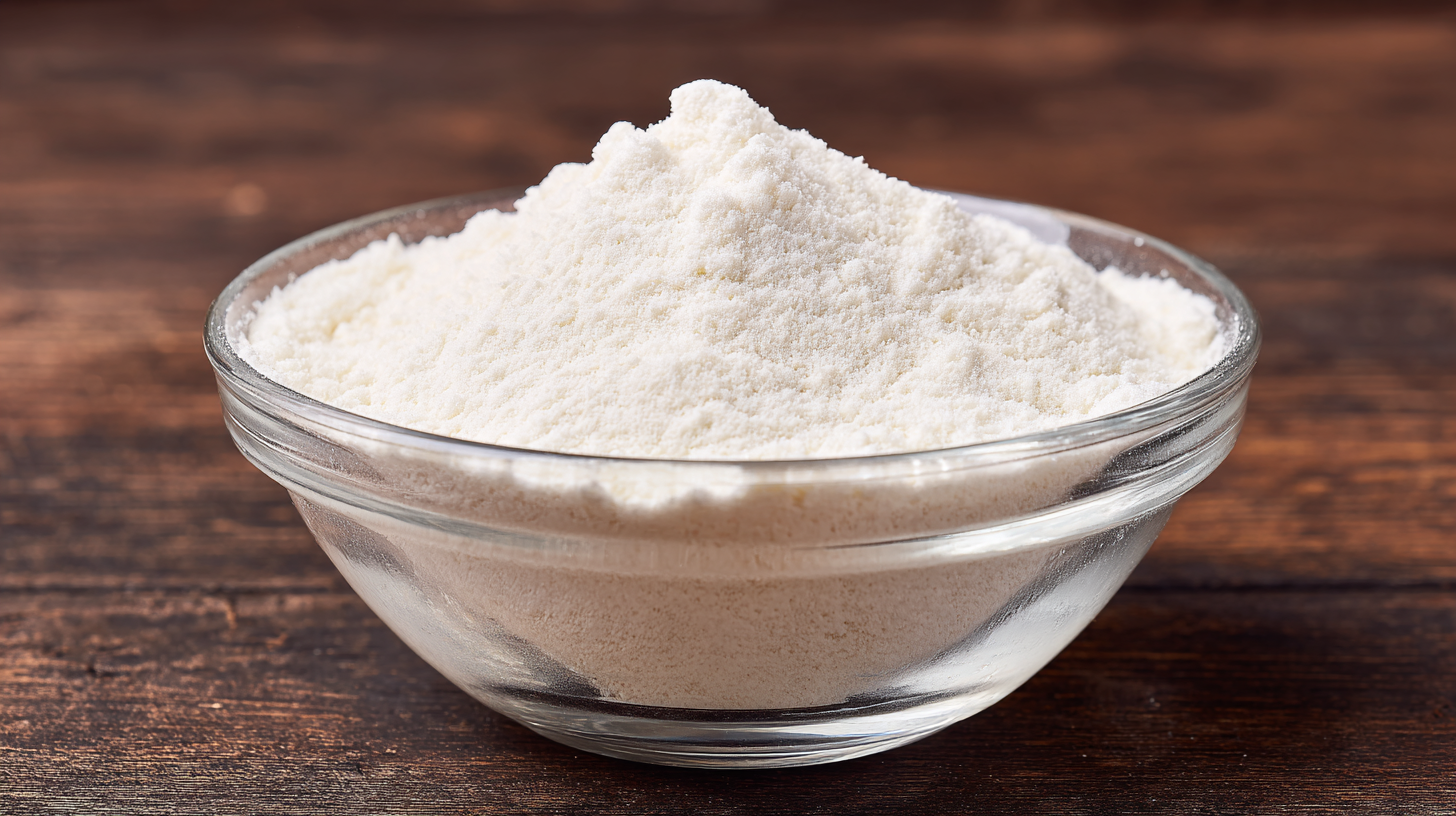Leave Your Message
 Xanthan Gum Soft has emerged as a remarkable ingredient in the realm of healthy cooking and baking, captivating both professional chefs and home cooks alike. This versatile thickening agent not only enhances the texture of various dishes but also carries an array of health benefits that make it a perfect choice for those seeking to maintain a balanced diet. As we delve into the wonders of Xanthan Gum Soft, it becomes clear that its unique properties can transform ordinary recipes into culinary delights while adhering to health-conscious principles.
Xanthan Gum Soft has emerged as a remarkable ingredient in the realm of healthy cooking and baking, captivating both professional chefs and home cooks alike. This versatile thickening agent not only enhances the texture of various dishes but also carries an array of health benefits that make it a perfect choice for those seeking to maintain a balanced diet. As we delve into the wonders of Xanthan Gum Soft, it becomes clear that its unique properties can transform ordinary recipes into culinary delights while adhering to health-conscious principles.
In this exploration, we will highlight the multifaceted applications of Xanthan Gum Soft, from creating gluten-free baked goods to thickening sauces and dressings, providing an alternative for those with dietary restrictions. The ability of Xanthan Gum Soft to mimic traditional cooking techniques without compromising on quality or taste makes it an essential ingredient for innovative and wholesome meals. Join us as we unveil the top methods and tips for incorporating Xanthan Gum Soft into your kitchen repertoire, ensuring that your cooking and baking not only taste great but also promote overall well-being.
Xanthan gum is a fascinating ingredient with a rich history dating back to the 1960s. It is derived from the fermentation of sugars by the bacterium Xanthomonas campestris, which is commonly found on cruciferous vegetables such as cabbage. The production process begins with cultivating this bacterium in a controlled environment where it metabolizes carbohydrates. These sugars can be derived from various sources, including corn, wheat, or sugar beets, making xanthan gum a versatile additive.
Once fermentation is complete, the xanthan gum is extracted and purified through a series of steps, which involves drying and milling the product into a fine powder. This powder is then ready to be used in a wide range of culinary applications, from thickening soups to stabilizing salad dressings. The unique properties of xanthan gum allow it to retain moisture and create appealing textures in gluten-free baked goods, making it a popular choice among health-conscious cooks and food enthusiasts alike.
Xanthan gum is a remarkable ingredient that has gained popularity in healthy cooking and baking. Derived from the fermentation of sugars by the bacterium Xanthomonas campestris, this natural thickening agent boasts impressive health benefits. One of its primary advantages is its ability to enhance the texture and consistency of various dishes without adding extra calories or fat. This makes xanthan gum an excellent choice for individuals looking to maintain a healthy diet while still enjoying their favorite recipes.
Moreover, xanthan gum is gluten-free, making it an ideal substitute for traditional thickeners and binders in gluten-sensitive diets. When used in baking, it can help improve the elasticity and structure of gluten-free flours, resulting in baked goods that are moist and tender. Additionally, xanthan gum has been shown to have prebiotic properties, which can support digestive health by promoting the growth of beneficial gut bacteria. Incorporating xanthan gum into your cooking can enhance not only the flavor and texture of your meals but also contribute to overall wellness.
Xanthan gum has emerged as a vital ingredient in healthy cooking and baking, renowned for its ability to enhance texture and consistency in a variety of recipes. This thickening agent, derived from fermented sugar, can replace gluten in many formulations, making it an excellent choice for gluten-free baking. According to the Food Industry Association, the gluten-free market is expected to surpass $10 billion by 2025, highlighting the increasing demand for versatile ingredients like xanthan gum. Its unique properties allow it to stabilize emulsions, improve mouthfeel, and create that desirable chewy texture in baked goods.

When using xanthan gum in your cooking, it's essential to remember a few tips. Start with small amounts; typically, 1/8 to 1/4 teaspoon per cup of liquid is sufficient to achieve the desired consistency. For optimal results in baking, mix xanthan gum with dry ingredients before adding liquids to ensure even distribution. Additionally, for those experimenting with new recipes, it's useful to note that xanthan gum performs well in both hot and cold applications, making it a versatile addition to sauces, smoothies, and dressings.
Incorporating xanthan gum into your recipes not only elevates your culinary creations but also caters to diverse dietary needs. As the demand for healthier food options grows, xanthan gum stands out as a reliable ingredient that enhances the overall quality of meals without compromising taste.
Xanthan gum is a powerhouse ingredient often used in gluten-free baking to mimic the elasticity found in gluten. It acts as a thickening agent and stabilizer, providing a desirable texture to baked goods. However, using xanthan gum effectively requires a few practical tips to ensure optimal results.
Firstly, it's important to understand the right amount to use. Generally, a quarter to half a teaspoon of xanthan gum per cup of gluten-free flour is sufficient for most recipes. Adding too much can result in a gummy or overly dense texture, so measuring it precisely is crucial. Additionally, whisking xanthan gum with the dry ingredients before adding liquids can help prevent clumping and promote even distribution throughout the mixture.
Another tip is to combine xanthan gum with other binding agents, such as psyllium husk or ground flaxseed. This combination can enhance the texture and moisture retention of your baked goods, making them softer and more enjoyable. Experimenting with different ratios can yield improved results, especially in recipes like bread and cookies where texture is key. By following these tips, you can unlock the full potential of xanthan gum in your gluten-free baking adventures.
 Xanthan gum is a versatile ingredient that can transform everyday meals into culinary masterpieces. Known for its thickening and stabilizing properties, it is particularly valuable in gluten-free cooking and baking. For instance, using xanthan gum in pancake or waffle batter can enhance texture, providing a fluffy and tender result that rivals traditional recipes. Incorporating it into sauces and dressings can help achieve that perfect consistency, preventing separation and ensuring a smooth blend.
Xanthan gum is a versatile ingredient that can transform everyday meals into culinary masterpieces. Known for its thickening and stabilizing properties, it is particularly valuable in gluten-free cooking and baking. For instance, using xanthan gum in pancake or waffle batter can enhance texture, providing a fluffy and tender result that rivals traditional recipes. Incorporating it into sauces and dressings can help achieve that perfect consistency, preventing separation and ensuring a smooth blend.
Delicious recipes featuring xanthan gum can easily elevate your home cooking. Consider whipping up a creamy butternut squash soup where xanthan gum adds richness without the need for heavy cream. Alternatively, a chocolate chip cookie recipe can benefit from xanthan gum, ensuring the cookies maintain their shape while being soft and chewy. These scrumptious dishes showcase how a small amount of xanthan gum can make a significant impact, allowing you to enjoy healthier, delicious meals without sacrificing taste or texture.
